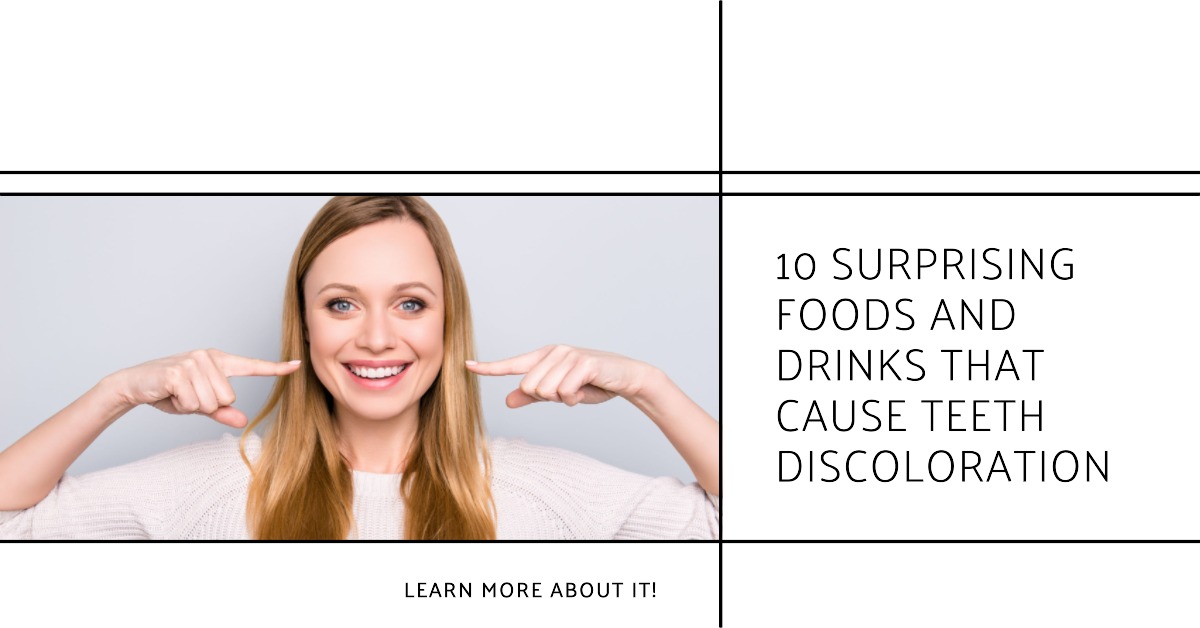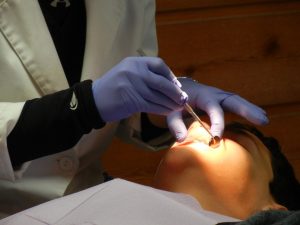10 Surprising Foods And Drinks That Cause Teeth Discoloration
Discoloration of the teeth is an unwelcome side effect that can be caused by some of our favorite foods and drinks. While we might know how to take care of our pearly whites, there are many surprising culprits that can lead to discoloration. From coffee and tea to balsamic vinegar and soy sauce, this article will explore 10 unexpected foods and drinks that may cause teeth discoloration. Despite their seemingly innocent nature, these items have the potential to lead to serious staining over time if not addressed properly.
Coffee
Coffee is known to be a popular beverage, however it has been linked to staining teeth. To help avoid this dental hygiene concern, some people opt for consuming alternatives like green tea or herbal tea which are not as likely to cause discoloration. In addition, maintaining good oral hygiene habits and visiting your dentist regularly can help prevent discoloration from any substances in the diet or lifestyle impacts such as smoking. Cosmetic solutions such as professional whitening are also available if you’re looking for an extra boost of brightness in your smile.
Tea
Consuming tea may be seen as an innocuous habit, yet its tannins can lead to discolored enamel on teeth. From the traditional steeped black or green teas, to herbal and even iced varieties, each form of tea contains polyphenols which can penetrate the enamel of teeth and cause them to become darker in hue. Tea drinking is a popular pastime around the world, but it’s important for individuals who indulge in this beverage to take into consideration how it might affect their pearly whites.
Red Wine
Red wine is often regarded as a sophisticated and luxurious beverage, yet its astringency can lead to staining of the enamel on teeth. While it may be tempting to pour another glass, it’s essential to practice proper dental hygiene tips in order to protect against discoloration. Brushing your teeth or rinsing with water after drinking red wine can help maintain brighter smiles. Professional whitening treatments are also available if stains become particularly stubborn. For those looking for more creative ways to enjoy their favorite red wines, there are plenty of delicious recipes that incorporate them without risking tooth discoloration – from sangria and mulled wine to boozy truffles and ice cream! If you’re trying to avoid the stain altogether, look into some non-wine alternatives like grape juice or kombucha instead.
Soda
Soda is a widely consumed beverage that often contains high levels of sugar, which can put individuals at risk for dental decay if not moderated. From soft drinks to energy drinks, dark cola to iced tea and black tea, the variety of soda available today is seemingly endless. Aside from its cavity-causing properties, many types of soda are known to cause discoloration in teeth due to their acidic or darkly pigmented nature. The phosphoric acid found in some sodas and the tannins present in teas can stain teeth over time when consumed regularly without proper oral hygiene habits such as brushing and flossing regularly. Thus, it’s important for individuals who consume soda on a regular basis to practice good oral hygiene habits in order to avoid discoloration of their teeth.
Berries
Berries are a delicious, naturally-occurring source of vibrant color, making them an ideal choice for adding a burst of flavor and hue to any meal. However, some types of berries can be surprisingly damaging to teeth if they are consumed in large amounts. Pickled berries and dried berries can cause discoloration due to their high sugar content. Berry jams and juices also contain acids that can erode enamel, leading to discoloration over time. Even berry smoothies should be enjoyed in moderation as the natural sugars found in certain fruits can cause staining when exposed to the teeth for extended periods of time. Enjoying your favorite berry treats is still encouraged but brushing soon after consumption can help keep teeth healthy and bright!
Citrus Fruits
Citrus fruits, such as oranges, lemons, and limes, are renowned for their tart flavor and can be a refreshing addition to any meal. However, they can also cause teeth discoloration due to the high acidity of the fruits masking natural tooth coloration. Fortunately, there are ways to combat this issue with regular oral hygiene practices such as brushing and flossing after consuming citrus fruits to help remove any residue that may remain on the surface of your teeth. Additionally, using whitening products specifically designed for use on citrus stains can also be effective in restoring the original color of your teeth. Though consuming citrus fruits may result in tooth staining, it is important to remember that they still provide essential vitamins and minerals necessary for optimal oral health and hygiene.
Tomato Sauce
Tomato sauce is a popular condiment often found in many dishes, and it can be a source of staining for teeth due to its high acidity. The acidic content of tomato sauce can cause discoloration over time if it’s not removed with proper brushing and flossing. Additionally, artificial colors in some varieties of tomato sauces may also contribute to tooth discoloration. To prevent this from happening, it’s best to rinse your mouth out with water after consuming any type of tomato-based dish or sauce. If discoloration has already occurred, there are whitening solutions available that can help restore the original color of your teeth.
Curry
Curry is a type of dish that typically contains a blend of spices and herbs, and its flavor profile can range from mild to spicy. Curried nuts are an example of a crunchy snack that have been given an exotic twist thanks to the variety of curry powder available; while curry leaves can be used in various dishes to impart their distinct aroma and taste. Curry dishes are known for their unique combination of spices, with some featuring more mild flavors while others lean toward the spicier side. The complexity of flavor in curry dishes comes from the variety of spices used, such as turmeric, cumin, coriander, cardamom, mustard seeds and bay leaves – all lending to the overall flavor profile. Whether you prefer your curry mild or spicy, eating it may cause teeth discoloration due to its potent mix of curry spices.
Balsamic Vinegar
Balsamic vinegar is renowned for its sweet and tart flavor, making it a popular dressing and marinade that adds depth to many dishes. From fizzy balsamic cocktails to aged balsamic pickles, this versatile ingredient has been used in various forms to create interesting flavors and textures. For those who are looking for something savory, a balsamic glaze with grilled vegetables or meat is the perfect pairing. And if you’re feeling adventurous, why not try adding balsamic vinegar to your favorite dessert? A splash of balsamic can add an unexpected zing that will make any dish stand out! However, it’s important to note that consuming too much balsamic vinegar can lead to tooth discoloration over time.
Soy Sauce
Soy sauce is a condiment made from fermented soybeans, salt, and water that is commonly used to enhance the flavor of various dishes. However, it may come as a surprise that this flavorful addition can cause teeth discoloration if overused. In order to avoid this issue, one should take certain cleaning steps after having a meal such as brushing and flossing or using mouthwash. Additionally, there are many health benefits of consuming soy sauce such as its high protein content and anti-inflammatory properties. For those looking for an alternative seasoning option might want to look into soy sauce substitutes like tamari or liquid aminos which have similar flavor profiles but lack the discoloring effects of soy sauce. Lastly, when considering using soy sauce for cooking or flavoring meals, it’s important to be aware of its nutrition information including sodium levels so you don’t exceed your daily recommended intake.
Conclusion
In conclusion, it’s essential to be mindful of the foods and drinks we consume to maintain a bright and confident smile. This article has shed light on 10 surprising culprits that can cause teeth discoloration, ranging from commonly enjoyed beverages to unexpected food items. By being aware of these potential staining agents, we can make informed choices and take proactive steps towards preserving our dental aesthetics.
While it’s nearly impossible to completely avoid these teeth-staining foods and drinks, there are measures we can take to mitigate their impact. Regular dental hygiene practices such as brushing, flossing, and rinsing with an appropriate mouthwash can help remove surface stains and maintain oral health. Additionally, professional teeth whitening treatments provided by qualified dentists can effectively address stubborn discoloration, restoring a vibrant smile.
Remember, knowledge is power when it comes to teeth whitening. By arming ourselves with awareness and adopting good dental hygiene practices, we can enjoy the foods and drinks we love while keeping our teeth radiant and confident. So go ahead, indulge in moderation, and let your smile shine brightly!




